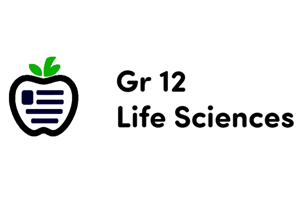Podcast
Questions and Answers
What is one of the functions of auxin related to root development?
What is one of the functions of auxin related to root development?
- It suppresses root initiation on stem cuttings.
- It promotes root initiation on stem cuttings. (correct)
- It enhances fruit ripening during harvest.
- It stimulates leaf growth from seeds.
How does auxin influence lateral bud growth?
How does auxin influence lateral bud growth?
- By inhibiting apical dominance, allowing lower buds to flourish.
- By promoting apical dominance, thus suppressing their growth. (correct)
- By enhancing their growth when ethylene is present.
- By stimulating their growth under all conditions.
What is the effect of auxin on fruit setting and growth?
What is the effect of auxin on fruit setting and growth?
- It induces fruit growth after fertilization only.
- It has no effect on fruit growth.
- It promotes fragmentation and loss of fruits.
- It can induce fruit setting even without fertilization. (correct)
Which of the following statements about ethylene is true?
Which of the following statements about ethylene is true?
What role does auxin play in abscission?
What role does auxin play in abscission?
Which hormone is primarily associated with the promotion of flowering in Bromeliads?
Which hormone is primarily associated with the promotion of flowering in Bromeliads?
What phenomenon occurs when auxin contributes to the development of fruit without prior fertilization?
What phenomenon occurs when auxin contributes to the development of fruit without prior fertilization?
Which process is influenced by auxin to enable callus formation in tissue culture?
Which process is influenced by auxin to enable callus formation in tissue culture?
What role do gibberellins play in the germination of seeds?
What role do gibberellins play in the germination of seeds?
How do gibberellins affect dwarf plants?
How do gibberellins affect dwarf plants?
What effect does gibberellin have on flowering?
What effect does gibberellin have on flowering?
What is the primary function of abscisic acid (ABA) in plants?
What is the primary function of abscisic acid (ABA) in plants?
Which of the following is a primary condition for flowering in many winter crops?
Which of the following is a primary condition for flowering in many winter crops?
How is abscisic acid (ABA) primarily produced and transported in plants?
How is abscisic acid (ABA) primarily produced and transported in plants?
What is the effect of gibberellins in the grape industry?
What is the effect of gibberellins in the grape industry?
What function do gibberellins and auxins serve when combined?
What function do gibberellins and auxins serve when combined?
What is a primary function of cytokinins in plant tissue culture?
What is a primary function of cytokinins in plant tissue culture?
How do cytokinins affect the balance between root and shoot growth?
How do cytokinins affect the balance between root and shoot growth?
Where is gibberellin primarily biosynthesized in plants?
Where is gibberellin primarily biosynthesized in plants?
Which of the following statements about gibberellins is correct?
Which of the following statements about gibberellins is correct?
What is one effect of ethylene on fruit maturation?
What is one effect of ethylene on fruit maturation?
What role does auxin play in the growth of plants?
What role does auxin play in the growth of plants?
What effect does cytokinins have on leaf senescence?
What effect does cytokinins have on leaf senescence?
Which of the following describes parthenogenesis in plants?
Which of the following describes parthenogenesis in plants?
Flashcards
Auxin movement
Auxin movement
Auxins primarily travel from the plant's tip (apex) downwards.
Auxin function - cell elongation
Auxin function - cell elongation
Auxin stimulates cells to grow longer.
Apical dominance
Apical dominance
Auxin from the top of the stem inhibits growth of side buds.
Auxin and callus formation
Auxin and callus formation
Signup and view all the flashcards
Auxin and fruit development
Auxin and fruit development
Signup and view all the flashcards
Parthenocarpic fruit
Parthenocarpic fruit
Signup and view all the flashcards
Auxin and flowering
Auxin and flowering
Signup and view all the flashcards
Phototropism
Phototropism
Signup and view all the flashcards
What are cytokinins?
What are cytokinins?
Signup and view all the flashcards
How do cytokinins interact with auxin?
How do cytokinins interact with auxin?
Signup and view all the flashcards
Where are cytokinins produced?
Where are cytokinins produced?
Signup and view all the flashcards
How do cytokinins influence lateral bud growth?
How do cytokinins influence lateral bud growth?
Signup and view all the flashcards
What is the role of cytokinins in leaf senescence?
What is the role of cytokinins in leaf senescence?
Signup and view all the flashcards
What is gibberellin?
What is gibberellin?
Signup and view all the flashcards
What is the role of gibberellin in cell metabolism?
What is the role of gibberellin in cell metabolism?
Signup and view all the flashcards
Where is gibberellin produced?
Where is gibberellin produced?
Signup and view all the flashcards
Gibberellins' role in germination
Gibberellins' role in germination
Signup and view all the flashcards
Gibberellins and stem elongation
Gibberellins and stem elongation
Signup and view all the flashcards
Gibberellins and fruit development
Gibberellins and fruit development
Signup and view all the flashcards
Gibberellins and flowering
Gibberellins and flowering
Signup and view all the flashcards
Abscisic acid (ABA)
Abscisic acid (ABA)
Signup and view all the flashcards
ABA transport
ABA transport
Signup and view all the flashcards
ABA and stomatal closure
ABA and stomatal closure
Signup and view all the flashcards
ABA synthesis location
ABA synthesis location
Signup and view all the flashcards
Study Notes
Lecture 6: Regulation of Developmental and Differentiation Hormones
- The lecture covers plant growth regulators (phytohormones)
- Students will learn to list these regulators and explain their functions
- Students will learn how hormones affect plant development
- Plant hormones are chemicals that alter growth and maintenance within a plant
- These substances are produced in low concentrations
- Hormones are mobile, and act over short and long distances
- Plant hormones are regulated in various tissues undergoing different development stages
- Two main groups of plant hormones: endogenous and exogenous
- Endogenous hormones are produced by the plant, and affected by its environment.
- Exogenous hormones are applied to a plant, and affect it in the same way as endogenous hormones.
Plant Hormones
- Plant hormones (or phytohormones) have multiple effects
- Send chemical signals to cells to regulate activity
- Activate or deactivate genes that encode specific enzymes
- Regulate cell division, elongation, and differentiation
- Respond to signals from the plant and its environment
Auxin
- Chemically, auxin is indoleacetic acid (IAA) derived from indole or tryptophan
- Synthetic auxins also exist, such as NAA and 2,4-D
- Auxins primarily move from the apical (top) part of a plant, downwards
- Influences plant growth and development
- Functions:
- Stimulate cell elongation, cell division in cambium, phloem differentiation, and xylem development.
- Roots can be stimulated to develop from stem cuttings in tissue culture
- Delays leaf senescence and suppression of lateral bud development
Callus Formation
- Plant growth regulators in tissue culture medium can induce callus formation (+ 2,4-D)
- Stages in callus formation include cell separation, cell suspension, cell clumping, cell divisions, heart stage embryo, torpedo shape embryo, mature embryo, and germination.
- 2,4-D can be substituted to induce embryos from callus.
Auxin (Further functions)
- Suppresses lateral bud growth: apical dominance
- Inhibits or promotes fruit and leaf abscission
- Promotes flowering in Bromeliads
- Influences phototropism (plant bending toward light)
Cytokinin
- Derivatives of purine adenine
- Found in actively dividing tissues of seeds, fruits, leaves, and root tips, wound tissue sites
- Promotes cell division and callus formation
- Roots supply cytokinins upwards to the shoots
- Cytokinins migrate through xylem tissue
- Promotes cell division by speeding up progression from G2 phase to mitosis phase
- Acts with auxin to promote elongation and expansion
- Effects:
- Promotes axillary (lateral) bud growth; over-rides auxin's inhibiting effect
- Delays (retards) leaf senescence
- Promotes germination of some seeds in the absence of light
Gibberellin
- Named after fungus Gibberella fujikuroi
- Family of compounds
- Many are inactive precursors to active forms
- Biosynthesis occurs in proplastids, chloroplasts, and plastids
- Accelerates metabolic pathways (respiration, protein synthesis)
- Functions:
- Signals germination, breaks seed dormancy
- Promotes mobilization of food materials (e.g. starch in cereal grains) in the embryo
- Plays a role in metabolizing lipids to glucose and then to sucrose
Gibberellin (Further functions)
- Works with auxins to promote rapid elongation and stem tissue division.
- Can overcome genetic dwarfism
- Can stimulate parthenocarpic fruit development in some species
- Induces flowering in some plants (especially biennial plants and winter crops).
- Vernalization in plants is the cold period required for flowering
Abscisic Acid (ABA)
- Natural plant growth retardant
- Often acts as an antagonist to gibberellins and auxin
- Biosynthesis occurs primarily in leaves
- Transported through xylem and phloem
- Functions:
- Stimulates stomata closure (water stress response)
- Enhances drought resistance
- Promotes stomata closure during water deficit by activating potassium ion transport
- Has important role in seed dormancy
- Maintaining high ABA levels in mature seeds and inhibiting germination
- Degraded by environmental factors such as light and enzymes triggering germination
Abscisic Acid (ABA) (Further functions)
- Inhibits shoot growth, but may promote growth of roots
- Induces seeds to synthesize storage proteins, and inhibits the effects of gibberellins on stimulating a-amylase
- Has a role in seed dormancy
- Low levels of ABA in maturing seeds can promote premature germination.
- Induces gene transcription, especially for proteinase inhibitors in response to plant wounding and pathogens, which explains a defense role.
Ethylene
- Sole plant growth regulator that is a gas (at room temperature)
- Produced in many plant organs, including wounded and bruised tissues, and commonly studied in fruits
- Synthesized from the amino acid methionine
- High auxin concentrations promote the conversion of intermediate substances into ethylene
- Toxic substances like air pollutants can trigger the conversion to ethylene
- Functions:
- Stimulation of fruit ripening (bananas, honeydew, melon, tomatoes)
- Causes softening of fruit through degradation of cell walls
- Causes leaf and fruit abscission
- Affects sex expression, promotes female flower production in some species, while high gibberellins promote male flower formation
- Ethylene gas breaks down chlorophyll, causing the degreening of fruits like citrus
Studying That Suits You
Use AI to generate personalized quizzes and flashcards to suit your learning preferences.




